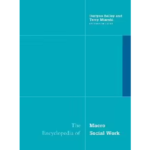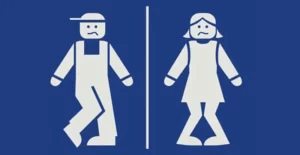Elena Delavega, Robin Lennon-Dearing, Susan Neely-Bames, Steve Soifer, and Cicely Crawford*
ARTICLE HISTORY
Accepted: September 2015
ABSTRACT
Social work has a rich tradition of engagement. Throughout its history, social work scholars have taken up questions that link knowledge production to its application in practice. Recently, other higher education fields have expressed interest in engagement. Yet, social work scholars have remained relatively silent about what they have to offer this new movement. This research note examines the parallels between the development of social work and the development of higher education, the ways social work is an engaged discipline, how engaged scholarship relates to translational research and evidence-based practice, and the implications of engaged scholarship for tenure and promotion. We argue that engaged scholarship should be considered the signature research methodology of social work.
U.S. universities have had a close relationship with their surrounding communities for more than 350 years (Boyer, 1996; Fitzgerald et al., 2012; Sandmann, 2008). As a result of this understanding of the U.S. university as a vital participant in the community, land grant universities were created during the late 19th and much of the 20th centuries. Established by the Morrill Act of 1862, the land grant universities were created to connect universities to citizens and communities and build a stronger democratic society (Fitzgerald et al, 2012). However, in the late 20th and early 21st centuries, universities slowly drifted from their mission of service to society.
Boyer (1990) observed that American universities were emphasizing pure research and de-emphasizing its application. In a special report for the Carnegie Foundation for the Advancement of Teaching, Boyer used national survey data to examine university trends and demonstrated that younger faculty and faculty at research institutions were being steered toward pure research, which lacked the application of research to community and society and the integration of their work with other disciplines. Boyer further demonstrated that faculty were being encouraged to give less attention to their teaching responsibilities and community service as research became increasingly emphasized. This shift resulted in less job satisfaction and greater personal strain on younger faculty and faculty at research institutions. In response to this trend, Boyer (1996) called for faculty to refocus on what he termed engaged scholarship.
Since the writings of Boyer (1990, 1996), engaged scholarship has emerged as a movement in higher education. In the past two decades, a number of universities have embraced the concept, and a set of higher education networks focused on engaged scholarship has developed {Fitzgerald & Simon, 2012). Fitzgerald et al. (2012) have identified engagement as the most critical academic movement of the 21st century. Questions rarely addressed in the engagement literature are: What can the engagement movement give to social work, and what can social work give to this movement? Engaged scholarship is closely aligned with other movements including participatory action research, evidence-based practice, translational research, and social justice. It has implications for research, teaching, tenure and promotion, and community
CONTACT Elena Delavega id) mdlavega@memphis.edu © University of Memphis, 223 McCord Hall, Memphis, TN 38152. *Deceased.
© 2017 Council on Social Work Education
Page 1
| E DELAVEGA ET AL. |
partnerships. We argue that social work is poised to be a leader in the academy by embracing the call for engaged scholarship.
What is engaged scholarship?
Engaged scholarship has been defined as a method and a movement. When Bover (1990) coined and defined the term, he sought to locate engaged scholarship among the various types of research or scholarship faculty might undertake. For Boyer, scholarship has four essential functions: discovery, integration, sharing knowledge, and scholarship reconsidered. Scholarship of discovery is the most traditional form of scholarship, the continued pushing on the frontiers of human knowledge to create new knowledge. The scholarship of integration is placing discoveries in interdisciplinary conversations. The scholarship of sharing knowledge is the integration of scholarship into classroom settings and other teaching tasks. Finally, scholarship reconsidered is the application of scholarship, which entails the movement from theory to practice. Bover aligns this fourth type of scholarship most closely with the scholarship of engagement.
For other writers, engaged scholarship is a movement (Isaacman, 2003; Schensul, 2010). This movement seeks to use the products and processes of research to educate the public on existing knowledge as well as to engage them in the production and use of knowledge. For Schensul (2010), engaged scholarship is defined as starting with the needs of marginalized communities. Increasing knowledge is tied to increasing power. Similarly, Isaacman (2003) views engaged scholars as those who challenge social hierarchies and oppressive institutions. Other scholars view engagement with the community as an essential component of the role of universities in solving societal problems (Fitzgerald et al, 2012). Fitzgerald et al. (2012) explain that engagement moves the focus from land grant institutions to world grant institutions or institutions that can tackle local and global problems of the 21st century.
Social work and engaged scholarship
The field of social work emerged during the period of expansion of land grants and other public universities. For example, Indiana University in 1911 established the first academic unit in social work education in a public university and the first advanced degree in social work (Busch et al, 2001). Since this time, social work has struggled to define itself (Abramovitz, 1998; Soifer, 1999). In the early 20th century, Abraham Flexner (1915/2001) questioned whether social work was truly a profession. Central to Flexner’s critique was a lack of a body of knowledge that defined social work and a lack of specificity in the objectives of social work education. This issue of how social work fits into the history of ideas about the social world, social problems, and professional practice has continued to perplex scholars over its 100-year history (Soydan, 2012).
One problem in defining social work has been the dichotomy of direct and indirect practice (Feit, 2003; Soifer, 1999), or put another way, the question of whether social work is about individual or social change (Abramovitz, 1998). For some scholars, the increasing interest in individual change threatens social work’s commitment to social justice {Abramovitz, 1998; Brill, 2001; Specht & Courtney, 1994). Others argue that the direct versus indirect debate is a false dichotomy and that work as a professional field and academic discipline must find a way to grow beyond the dichotomy (e.g., Feit, 2003; Hugman, 2009).
Another challenge for social work has been that it exists simultaneously as a practice tradition, an academic discipline, and a research tradition (Soydan, 2012). Throughout social work’s history, those in the profession have sought to bridge the gap between theories that are derived mostly from the social sciences and the practice tradition that defines it (Soifer, 1999). The uniquely distinctive feature of social work compared to many disciplines is the preeminence of praxis over hexes. Social work seeks to go beyond hexes, the traditional contemplation in academia in which thought is valued
Page 2
| JOURNAL OF SOCIAL WORK EDUCATION ® |
for thought’s sake, to praxis, research that does something, and the creation of knowledge that serves the community and fulfills its potential (Wolf, 2012). Parton (2000) put it well when he noted,
The great strength and distinctiveness of social work is that it has always … recognized that practice and theory are closely intertwined so that, at a minimum, practice informs the development of theory as much as, if not more than, vice versa and that it tries to give voice to the marginalized and silenced. (p. 461)
We assert that engaged scholarship and social work have a hand-in-glove fit based on their extremely close agreement in several matters including (a) the link between research and social problems, (b) the commitment to social justice, (¢) the partnership between the university and the community, and (d) the commitment to student learning. Next, we discuss these points as well as the implications for tenure and promotion.
The link between research and social problems
As previously stated, engaged scholarship is a movement away from pure research toward a scholarship that seeks to address social problems. Under engaged scholarship, social problems can be addressed whether they are local or global. Social work scholars have already participated in participatory action research (PAR), evidence-based practice (EBP), and translational research. Engaged scholarship is increasingly being defined as an organizing framework for all these methodologies focused on client and social change (Fitzgerald et al., 2012). We next explore the ways that social work is already engaged with PAR, EBP, translational research, and engaged scholarship.
PAR and service-user voices
Engaged scholarship and PAR are closely aligned movements. Healy (2001) defines PAR as the synthesis of investigation, education, and action to promote fundamental social transformations. Similarly, engaged researchers join with communities mindful of communities’ needs but also attentive to the tremendous community strengths, typically embedded in the lived experience of community members “that possess indigenous leadership, coherent traditions, and rich cultures” (Moxley, 2004, p. 238). In fact, Boyer (1996) defines PAR as an essential prong of engaged scholarship. PAR has been increasingly embraced by academic social workers (Fenge, 2010; Kreitzer et al, 2009; Malter, Smith, Jacobsen, & Wise, 2008). Healy (2001) argues that PAR is consistent with social work’s commitment to social justice. This is because PAR locates the problems in social structures, social relations, and dominant ideologies rather than in the individual or family.
In recent decades, interest in client or service user involvement in social work and social welfare systems has increased (Beresford, 2000). For example, the disability movement and other related movements of people living with HIV/AIDS and mental illness have called for “nothing about us without us” (Beresford, 2000, p. 489). For Beresford (2000), service users’ voices are critical to the development of theory and practice that are empowering, not oppressive. Since the publication of Beresford’s article, engaging service users has become expected in many types of social work research (Loughran & McCann, 2013). The movement toward including service users in planning research and practice is consistent with the PAR and engaged scholarship movements.
Translational research and EBP
Two movements that are also gaining ground in social work are translational research (Fong, 2012) and EBP (Mullen, Bellamy, Bledsoe, & Francois, 2007; Rosen, 2003). The National Institutes of Health defines translational research as what results in the beneficial “adoption of best practices in the community” (Rubio et al., 2010, p. 471). Fong (2012) defines translational research as taking research-informing practice and practice-informing research and operationalizing them to tie them more closely together. Shlonsky and Gibbs (2004) define EBP as “a systematic process that blends current best evidence, client preferences (wherever possible), and clinical expertise” (p. 137),
Page 3
| E DELAVEGA ET AL. |
resulting in services that are individualized and empirically sound. EBP is the application of the best research evidence to make decisions about the care of individual clients (Gibbs & Gambrill, 2002).
The translational research and EBP movements are consistent with the goals of engaged scholarship. As Doberneck, Glass, and Schweitzer (2010) explain, translational research, or translational science, is the corollary of engaged scholarship in the health and medical fields. They conceptualize translational research as part of the engaged scholarship movement in higher education. Collins-Camargo and Hoffman (2006) argue that partnership is critical to EBP, and the goals of EBP can only be fully accomplished in the context of a partnership that transforms agencies so that high standards of inquiry, ethical conduct, and meaningful collaborations become agency norms. As social work researchers embrace EBP (Mullen et al, 2007), connections between universities and community agencies will be critical to ensuring evidence-based interventions are implemented.
Social justice and engaged scholarship
Social work and engaged scholarship both share a commitment to social justice (National Association of Social Workers [NASW], 2008). Rountree and Pomeroy (2010) call social justice an organizing value for social work that distinguishes it from other professions. Social justice is a guiding principle for social work practice and research (Vincent, 2012). Social work’s ethical standards connect the development of knowledge through research and evaluation to social work’s goal of improving social conditions and promoting social justice (NASW, 2008).
Similarly, engaged scholars put the pursuit of social justice at the center of their work. Moxley (2004) suggests that community-engaged scholars approach inquiry as part of their social responsibility to provide service to the community. Engaged scholars work with the communities to empower them to address social injustices. An engaged scholar approaches the research design, process, and execution as a partner and collaborator with the community affected by social injustice (Moxley, 2004; Strier, 2007). Social work and engaged scholarship both take an empowerment stance on social justice (Gutiérrez, GlenMaye, & DeLois, 1995; Moxley, 2004).
Social work’s values of service, dignity, and worth of the person, and social justice (NASW, 2008) compel social workers to be directly involved in positive change, including in the practice of research. We are calling for social work research that goes beyond answering what is and answers so what? to make a real impact on the lives of our clients at all levels. Social work research requires involvement and commitment to joint participation with our communities, not as observers but as partners in the development and application of knowledge.
University-community partnerships
University-community partnerships are valued by social workers and engaged scholars. Boyer (1990) suggested that engaged scholarship should go beyond simple discovery to encompass integration, application, and teaching. He described the “scholarship of engagement” as “connecting the rich resources of the university to our most pressing social, civic, and ethical problems, to our children, to our schools, to our teachers, and to our cities” (p. 19). Barker (2004) explains that engagement, a “reciprocal, collaborative relationship” (p. 124) with the community, is part of scholarly practice. Engaged scholars approach communities as partners in which there is a process of mutual learning from one another.
Community partnerships also have had a central place in social work research (Coulton, 2005: Doe & Lowery, 2004), teaching (Ishisaka, Farwell, Schng, & Uehara, 2004), and in our signature pedagogy, field education (Drabble et al., 2013). A strong link between a university and a community partner can be transformative for the community agency as well as for the university’s research agenda. Universities can form partnerships to help agencies challenge ideas, strive toward better practice, and create a culture of inquiry (Collins-Camargo & Hoffman, 2006). Thus, the growing interest of universities in community partnerships should be beneficial to social work researchers.
Page 4
| JOURNAL OF SOCIAL WORK EDUCATION |
Baffour (2011) points out that ideal university-community partnerships “will have a mutual interest in both research and social action” (p. 9). Social work researchers possess formal knowledge, whereas community members have knowledge acquired through experience. Consequently, what each partner brings to the relationship is valuable and can be used to facilitate social change.
One of the ways social work programs strengthen their ties to the community is through the creation of social work research centers or institutes (Allen-Meares, 2008; Berg-Weger et al, 2004). Centers or institutes can provide a community with resources such as faculty expertise, evaluation, human resource development, and continuing education. Furthermore, the center or institute can connect the university to an urban neighborhood that is lacking in resources (Allen-Meares, 2008). As administrators of universities recognize the importance of community-engaged scholarship (Nicotera, Cutforth, Fretz, & Thompson, 2011), social workers can use this tradition of centers to be leaders in the engaged scholarship movement.
Engaged in scholarship and teaching
In social work and engaged scholarship, student learning is a hands-on process, and students are future citizens, future practitioners, and future scholars. There are many examples in the literature in which social work faculty have integrated community partnerships into social work curricula. For example, Smith and McCaslin (2011) describe their BSW program’s partnership with their county’s agency on aging. Students taking an undergraduate research course were able to provide research assistance to the agency while gaining valuable research experience with the older adult population. Strong university—community partnerships can be useful for ongoing service-learning opportunities for students while providing a supply of free volunteer service to an agency. Social work researchers who have created a strong connection to the community note improved experiences for students through service learning and field placement (Drabble et al, 2013; Rogge & Rocha, 2004). Social work is also engaged with the community through continuing education (McMichael, 2000). By offering continuing education courses and training programs, many social work academic units strengthen their ties to social workers practicing in the community.
Tenure and promotion
Fitzgerald et al. (2012) note that engaged scholarship emphasizes impact over product. Thus a significant concern about engaged scholarship is centered on whether it is feasible for junior faculty on the tenure track. The problem focuses on how to reconcile the costs and time associated with engaged research with the demands of the tenure track. Many times, tenure committees misperceive tasks related to engaged scholarship as service rather than scholarship. This is an unfortunate misperception as service is the least valued of the three pillars (i.e., teaching, research, and service) of the traditional tenure evaluation matrix (Whitmer et al., 2010).
Some proponents of engaged scholarship have suggested that the problem of engaged scholarship on the tenure track should be resolved by reframing expectations. Glassick, Huber, and Maeroff (1997) have argued that rather than focusing on the number of peer-reviewed publications, faculty performance should be assessed on clear goals, adequate presentation, appropriate methods, significant results, effective presentation, and reflective critique. Collison, Jordan, and Seifer (2005) advocate for tenure and promotion policies and procedures that value engagement.
Other scholars have emphasized that the pressure to publish and the desire to be engaged do not have to be disconnected. Doberneck et al. (2010) reviewed the materials of successful tenure applicants at Michigan State University and found they had participated in 14 different types of publically engaged scholarship. Rogge and Rocha (2004) state that their experience of working pre-tenure with a community-based center provided rich material for dissemination through publications and conference presentations, which resulted in their success in achieving tenure and promotion. Finally, Foster (2010)
Page 5
| E DELAVEGA ET AL. |
argues that faculty service can be transformed into engaged scholarship to benefit the tenure-track researcher and the community.
Peer review and mass communication
Social workers and engaged scholars can increase their contribution to the community by disseminating their research findings in lay terminology in mass communication media such as blogs; television and radio interviews and broadcasts; and newspaper and magazine articles in addition to peer-reviewed journals. Oftentimes, however, research findings are published in a way that is obtuse and difficult to understand (Klein, 2014). The system of peer-reviewed publications that is typically a prerequisite for faculty to achieve tenure status, although essential to rigorous research, has the effect of marginalizing scholars and excluding them from the real world (Kristof, 2014). As a result, research will often fail to solve real-world problems (Kristof, 2014). If the goal of research is to disseminate findings and inform practice and the public, peer-reviewed publications in restricted-access journals are just the beginning. Effective use of mass media outlets is an excellent tool for changing social perceptions and achieving change (Rohlinger & Brown, 2013), once peer review has endorsed the methods and analysis. In addition to peer-reviewed publications, when academics actively use mass media to communicate their findings, the public is very receptive to information gained through rigorous research (Sugimoto & Thelwall, 2013). Yet, social work scholars have often failed to take advantage of opportunities to use media. In this respect, social work lags behind other disciplines, and as a result, other disciplines are shaping the public’s views of the common person and social problems (Kristof, 2014). If social work is to be effective in its mission to promote social justice and human rights, social workers have to effectively communicate research findings through easily accessible outlets such as blogs, newspapers, and magazines. By communicating our work as social workers in peer-reviewed and popular outlets, we can participate in research in a manner that is truly transformational.
Conclusion: Signature research methodology
We live in a time in which university presidents and provosts are embracing the notion of engaged scholarship. The Carnegie Foundation for the Advancement of Teaching (2015) has developed a system for institutions to elect to be classified as community-engaged institutions; currently, 240 institutions of higher learning have earned that classification. We also live in a time of arguments over whether higher education continues to have value (Blake, 2012). Engaged scholarship is a method for articulating the value of higher education to the public and can be used as a mechanism to bolster the reputation of higher education in the 21st century and beyond (Fitzgerald et al, 2012).
Social work is located clearly within the realm of engaged scholarship. First, we have a commitment to use research to inform practice and use practice to inform research. Second, we use research to empower marginalized communities and promote social justice. Third, we teach students through methods that are connected to our community such as field placement and service learning. Finally, social work academic units often forge university-community partnerships through the creation of centers or offering continuing education.
Engaged scholarship is consistent with the traditions of social work. The new focus on engaged scholarship in universities creates an opportunity for those in social work to position the field as a leader for other disciplines. As Allen-Meares (2008) notes, schools of social work are uniquely positioned to contribute to the engaged scholarship movement while simultaneously furthering the empowerment of oppressed people and social change. We are proposing that engaged scholarship should be considered the signature research methodology of social work and that those of us in social work should work to position the field as a leader in the engaged scholarship movement.
Page 6
| JOURNAL OF SOCIAL WORK EDUCATION |
Notes on Contributors
Elena Delavega is an assistant professor, Robin Lennon-Dearing is an associate professor, Susan Neelv-Barnes is a professor, Steve Soifer is a professor, and Cicely Crawford received an MSW from the University of Memphis in 2013.
References
Abramovitz, M. (1998). Social work and social reform: An arena of struggle. Social Work, 43, 512-526. doi:10.1093/sw/ 43.6.512
Allen-Meares, P. (2008). Schools of social work contribution to community partnerships: The renewal of the social compact in higher education. Journal of Human Behavior in the Social Environment, 18, 79-100. doi:10.1080/ 10911350802317194
Baffour, T. (2011). Addressing health and social disparities through community-based participatory research in rural communities: Challenges and opportunities for social work. Contemporary Rural Social Work, 3, 4-16.
Barker, 10. (2004). The scholarship of engagement: A taxonomy of five emerging practices. Journal of Higher Education Outreach and Engagement, 9, 123-137.
Beresford, P. (2000). Service users’ knowledge and social work theory: Conflict or collaboration? British Journal of Social Work, 30, 489-503. doi:10.1093/bjsw/30 4.489
Berg-Weger, M., Tebb, S. 8, Loveland Cook, C. A., Gallagher, M. B., Flory, B., & Cruce, A. (2004). The collaborative research education partnership: Community, faculty, and student partnerships in practice evaluation. Journal of Community Practice, 12, 141-162. doi:10.1300/]125v12n03_09
Blake, D. (2012, June 6). Education just isn’t worth the money anymore. Retrieved from http://www. business insider.
com/these-two-charts-prove-a-college-education-just-isnt- worth-the-money-anymore-2012-6
Boyer, E. L. (1990). Scholarship reconsidered: Priorities of the professoriate. Princeton, NJ: Carnegie Foundation for the
Advancement of Teaching.
Boyer, E. L. (1996). The scholarship of engagement. Bulletin of the American Academy of Arts and Sciences, 49, 18-33.
doi:10.2307/3824459
Brill, C. K. (2001). Looking at the social work profession through (the eye of the NASW Code of Ethics. Research on
Social Work Practice, 11, 223-234. doi:10.1177/104973150101100209
Busch, M., Powers, G. T., Metzger, D., Behroozi, C. 8, Siegel, S., & Cournoyer, B. R. (2001). Indiana University School
of Social Work: 90 years of professional education. Advances in Social Work, 2, 83-100.
Calleson, D. C,, Jordan, C., & Seifer, S. D. (2005). Community-engaged scholarship: Is faculty work in communities a
true academic enterprise? Academic Medicine, 80, 317-321. doi:10.1097/00001888-200504000-00002
Carnegie Foundation for the Advancement of Teaching. (2015). All community engagement classified institutions: 2010 and 2015. Retrieved from http://nerche.org/images/stories/projects/Carnegie/2015/2010_and_2015_CE_Classified Institutions _revised_1_11_15.pdf
Collins-Camargo, C., & Hoffman, K. (2006). University/child welfare agency partnerships: Building a bridge between the Ivory Tower and the state office building. Professional Development, 9(2/3}, 24-37.
Coulton, C. (2005). The place of community in social work practice research: Conceptual and methodological developments. Social Work Research, 29, 73-86. doi:10.1093/SWR/29.2.73
Doberneck, D. M., Glass, C. R,, & Schweitzer, J. (2010). From rhetoric to reality: A typology of publically engaged scholarship. Journal of Higher Education Outreach and Engagement, 14, 5-35.
Doe, S. S. J, & Lowery, D. (2004). The role of evaluation in developing community-based interventions. Journal of Community Practice, 12, 71-88. doi:10.1300/T125v12n03 05
Drabble, L., Lemon, K., I’Andrade, A., Daniel, B., & Le, J. (2013). Child welfare partnership for research and training: A Title TV-E university/community collaborative research model. Journal of Public Child Welfare, 7, 411-429. doi:10.1080/15548732.2013.802267
Feit, M. D. (2003). Toward a definition of social work practice: Reframing the dichotomy. Research on Social Work Practice, 13, 357-365. doi:10.1177/1049731503013003010
Feng, L. (2010). Striving towards inclusive research: An example of participatory action research with older lesbians and gay men. British Journal of Social Work, 40, 878-894. doi:10.1093/bjswibenl44
Fitzgerald, H. E., Bruns, K, Sonka, S. T., Furco, A., & Swanson, L. (2012), The centrality of engagement in higher education. Journal of Higher Education Outreach and Engagement, 16, 7-27.
Fitzgerald, H. E., & Simon, I. A. K. (2012). The world grants ideal and engagement scholarships. Journal of Higher Education Outreach and Engagement, 16(3), 33-55.
Flexner, A. (2001). Is social work a profession? Research on Social Work Practice, 11, 152-165. (Reprinted from Proceedings of the National Conference of Charities and Corrections at the Forty-second annual session held in Baltimore, MD, May 12-19, 1915. Chicago, IL: Hildmann.
Fong, R. (2012). Framing education for a science of social work: Missions, curriculum, and doctoral training. Research on Social Work Practice, 22, 529-536. doi:10.1177/1049731512452977
Page 7
| E DELAVEGA ET AL. |
Foster, K. M. (2010). Taking a stand: Community-engaged scholarship on the tenure track. Journal of Community Engagement and Scholarship, 3(2), 20-30.
Gibbs, T., & Gambrill, E. (2002). Evidence-based practice: Counterarguments to objections. Research on Social Work Practice, 12, 452-476. doi:10.1177/1049731502012003007
Glassick, C. E., Huber, M. T., & Maeroff, G. 1. (1997). Scholarship assessed: Evaluation of the professoriate. San Francisco, CA: Jossey-Bass.
Gutierrez, L., GlenMaye, L., & Delois, K. (1995). The organizational context of empowerment practice: Implications for social work administration. Social Work, 40, 249-258. doi:10.1093/sw/40.2.249
Healy, X. (2001). Participatory action research and social work: A critical appraisal. International Social Work, 44, 93-105. doi:10.1177/002087280104400108
Hugman, R. (2009). But it 1s social work? Some reflections on mistaken identities. British Journal of Social Work, 39, 1138-1153. doi:10.1093/bjsw/bcm 158
Isaacman, A. (2003). Legacies of engagement: Scholarship informed by political commitment. African Studies Review, 46(1), 1-41. doi:10.2307/1514979
Ishiseka, H. A., Farwell, N, Sohng, S. S. L., & Uehara, E. S. (2004). Teaching Notes: Partnership for integrated community-based learning: A social work community—campus collaboration. Journal of Social Work Education, 40, 321-336. Retrieved from http://www jstor.org/stable/23044023
Klein, FF. (2014). The real reason nobody reads academics. Retrieved from http://www bloombergview.com/articles/ 2014-02 28/the-real-reason-nobody-reads-academics
Kreitzer, L., Abukari, Z., Antonio, P., Mensah, J., & Kwaku, A. (2009). Social work in Ghana: A participatory action research project looking at culturally appropriate training and practice. Social Work Education, 28, 145-164. doi:10.1080/02615470802109973
Kristof, N. (2014, February 15). Professors, we need you! The New York Times [Online]. Retrieved from http://www. nytimes.com/2014/02/16/opinion/sunday/kristof-professors-we-need-you html?_r=1
Loughran, H., & McCann, M. E. (2013). Employing community participative research methods to advance service user collaboration in social work research. British Journal of Social Work, 10, 1-19. doi:10.1093/bjsw/bct133
Malter, S., Smith, L., Jacobson, N., & Wise, J. (2008). Reciprocity: An ethic for community-based participatory action research. Action Research, 6, 305-325. dot:10.1177/1476750307083720
McMichael, A. (2000). Professional identity and continuing education: A study of social workers in hospital settings. Social Work Education, 19, 175-183. doi:10.1080/02615470050003557
Moxley, D. (2004). Engaged research in higher education and civic responsibility reconsidered: A reflective essay. Journal of Community Practice, 12, 235-242. doi:10.1300/J125v12n03_14
Mullen, E. J, Bellamy, |. I.., Bledsoe, S. E., & Francois, J. J. (2007). Teaching evidence-based practice. Research on Social Work Practice, 17, 574-582. doi:10.1177/1049731507303234
National Association of Social Workers. (2008). Code of ethics. Washington, DC: NASW Press.
Nicotera, N., Cutforth, N., Fretz, E., & Thompson, S. S. (2011). Dedication to community engagement: A higher education conundrum? Journal of Community Engagement and Scholarship, 4(1), 37-48.
Parton, N. (2000). Some thoughts on the relationship between theory and practice in and for social work. British Journal of Social Work, 30, 449-463. doi:10.1093/bjsw/30.4.449
Rogge, M. E.,, & Rocha, C. J. (2004). University-community partnership centers: An important link for social work education. Journal of Community Practice, 12, 103-121. doi:10.1300/]125v12n03_07
Roblinger, D. A, & Brown, J. (2013). Mass media and institutional change: Organizational reputation, strategy, and outcomes in the academic freedom movement. Mobilization, [8, 41-64. doi:10.17813/maiq.18.1.q6h62418323x7858
Rosen, A. (2003). Evidence-based social work practice: Challenges and promise. Social Work Research, 27, 197-208. doi:10.1093/SWR/27.4.197
Rountree, M. A., & Pomeroy, E. C. (2010). Bridging the gaps among social justice, research, and practice. Social Work, 55, 293-295. doi:10.1093/sw/55.4.293
Rubio, D. M., Schoenbaum, E. E., Lee, L. §., Schteingart, D. E., Marantz, P. R., Anderson, K. E., … Esposito, K. (2010). Defining translational research: Implications for training. Academic Medicine, 85, 470-475. doi:10.1097/ACM.0b013e3181ccd618
Sandmann, L. R. (2008). Conceptualization of the scholarship of engagement in higher education: A strategic review, 1996-2006. Journal of Higher Education Outreach and Engagement, 12(1), 91-104.
Schensul, J. J. (2010). 2010 Malinowski Award engaged universities, community-based research, organizations, and third-sector science in a global system. Human Organization, 69, 307-320. doi:10.17730/humo.69.4.2g40869150316302
Shlonsky, A., & Gibbs, L. (2004). Will the real evidence-based practice please stand up? Teaching the process of evidence-based practice to the helping professions. Brief Treatment and Crisis Intervention, 4, 137-153. doi:10.1093/brief-treatment/mhh011
Smith, L. A., & McCaslin, R. (2011). Enhancing baccalaureate student learning in research and gerontology through partnership with an area agency on aging. journal of Teaching in Social Work, 31, 79-88. doi:10.1080/08841233.2010.539149
Page 8
| JOURNAL OF SOCIAL WORK EDUCATION |
Soifer, $. (1999). Social work: A profession in search of a paradigm. The Indian Journal of Social Work, 60, 37-56.
Soydan, H. (2012). Understanding social work in the history of ideas. Research on Social Work Practice, 22, 468-480.
doi:10.1177/1049731512441262
Specht, H., & Courtney, M. (1994). Unfaithful angels: How social work has abandoned its mission. New York, NY: Simon & Schuster.
Strier, R. (2007). Anti-oppressive research in social work: A preliminary definition. British Journal of Social Work, 37, 857-871. doi:10.1093/bjsw/bcl062
Sugimoto, C. R., & Thelwall, M. (2013). Scholars on soap boxes: Science communication and dissemination in TED videos. Journal of the American Society for Information Science and Technology, 64, 663-674. doi:10.1002/asi.22764
Vincent, N. J. (2012). Exploring the integration of social justice into social work research curricula. Journal of Social Work Education, 48, 205-222. doi:10.5175/J]SWE.2012.200900130
Whitmer, A., Ogden, L., Lawton, J., Sturncr, P., Groffman, P. M., Schneider, L., … Killilea, M. (2010). The engaged university: Providing a platform for research that transforms society. Frontiers in Ecology and the Environment, 8, 314-321. doi:10.1890/090241
Wolf, M. (2012). The sociology of translation and its “activist turn.” Translation and Interpreting Studies, 7, 129-143.










+ There are no comments
Add yours